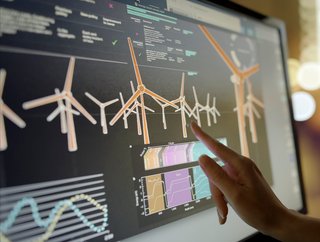Empowering a Sustainable Energy Future with Climate Tech

Many landmark achievements came from COP28 in Dubai back in November. The most groundbreaking of which was almost 200 countries at the summit pledging to transition away from fossil fuels to avert the worst effects of climate change. But in the months since, some questions are still bouncing around as to what methods will make the biggest impact in working toward this colossal goal.
For Capgemini’s Florent Andrillion, climate tech has the ability to play a big part in the answer.
The discussion on climate tech and its implications for sustainability significantly applies to the energy sector, he believes. With renewable energy sources like solar, wind and hydropower crucial to decarbonising energy production and reducing greenhouse gas emissions, solutions to mitigate impact in other areas of energy production are vital to decarbonisation goals.
Capgemini’s latest climate tech report: Climate Tech: Harnessing the power of technology for a sustainable future, examines climate tech’s role in helping battle climate change and the barriers faced in adopting it. One of the key findings of the report is that despite many of the technologies able to address climate change being readily available to reduce greenhouse gas emissions, the ‘green premium’ — the additional cost of pollution-free production — stands in the way of 77% of organisations adopting it. This premium is only set to rise as climate technology becomes increasingly integral.
Climate tech: Key to decarbonisation?
Three quarters of organisations say they will not achieve their sustainability goals without climate tech, Capgemini’s research suggests. Unwilling or unable to pay the markup associated with climate technologies essential to fighting the climate crisis, it’s predicted that the average increase in product cost due to climate tech adoption — the green premium — that organisations are willing to accept is under 9%. However, the existing green premium for a vast array of clean products sits significantly higher than this.
“Technology is among the critical enablers for accelerated climate action, along with finance and international cooperation,” Andrillon, Capgemini’s Global Head of Climate Tech, begins. “We have less than six years to halve global greenhouse gas emissions and reduce methane emissions by a third if we are to limit global warming to 1.5°C. To get there by 2030, we need to go beyond incremental innovations and behaviour change. We must make systemic changes in technologies, institutions and practices on a huge scale. We need a new industrial revolution.”
Climate tech barriers
With this being said, Andrillon advocates for a renewed focus on means of overcoming barriers, with accelerating development cycles, collaboration and addressing cost barriers through incentives and legislation just some of the means unleashing these technologies’ potential. He is a firm believer that more can be done when it comes to obtaining and implementing climate tech.
“Major corporations, climate tech startups and governments need to work together to accelerate the scaling of innovative solutions,” he believes. “But, there is a barrier on costs to be addressed. While the green premium is disappearing in many domains — like solar power and EV batteries — it remains typically significantly higher than this for several others.”
For example, the cost of low-carbon cement produced using carbon capture is estimated to be 75% to 140% higher than conventional cement and sustainable aviation fuel (SAF) is estimated to cost 123% more than conventional jet fuel.
Andrillon continues: “As a result, climate technologies cannot currently help create cleaner products and services in a commercially viable way. That is typically where private and public must cooperate to create the conditions for market adoption by setting up the right incentives and legislation.”
The development of key climate technologies is not only facilitating progress for global decarbonisation efforts, but is supporting sustainability goals on a more micro scale, too. From this, Andrillon sees climate tech nearing mainstream adoption.
“Growth in key climate technologies, including renewable power and electric vehicles (EVs), has helped accelerate decarbonisation efforts around the world,” Adrillon echoes. “Other climate technologies such as low-carbon hydrogen, carbon capture and alternative fuels are becoming available and, if scaled, could help businesses achieve their sustainability goals.”
Climate tech’s potential
To scale up, more public support, investment and collaboration across sectors is required. Regardless of being an expert across the realms of energy, utilities and sustainability, Andrillon has witnessed his fair share of surprises off the back of this report — which have caused shock but also has provided a sense of encouragement regarding the prospect of climate tech and its potential future impact.
“The first surprise for me was the level of contribution that executives see for climate tech in their net zero targets,” Andrillon shares. “The second was that, while they are conscious of it, investment still does not follow, except in domains where green premium is fading away or when they have no other choices due to regulatory pressure.
“But despite the challenges, there are pockets of rapid scale up in climate tech adoption. Executives in these areas expect adoption of technology to spread rapidly: within three years for EVs in the automotive industry, within four years for solar PV in the energy and utilities sector, within three years for SAF in the aviation industry and within two years for carbon capture in the cement industry.
“Many major climate technologies are now getting closer to their ‘tipping point’ and will become mainstream as the regulation evolves toward a higher cost of carbon and more stringent regulation on mitigation across industries,” Andrillon foresees. “Organisations will also need to adopt them when they have activated all the possible levers to reduce emissions and will need to switch to low or non emissive solutions.”
As well as this, Andrillon advocates for there to be a shift in organisations’ C-suites, and proposes the increase in the number of Decarbonisation Officers to operate alongside Sustainability Officers with profiles coming more from the product or manufacturing sides to action meaningful change.
He concludes: “The transition to a low-carbon economy is as big as the Industrial Revolution, but we need to deliver it at the pace of the Digital Revolution. The next challenge is scaling new technologies at an unprecedented speed, for which more substantive work, more public support, and more investment are urgently required.”







